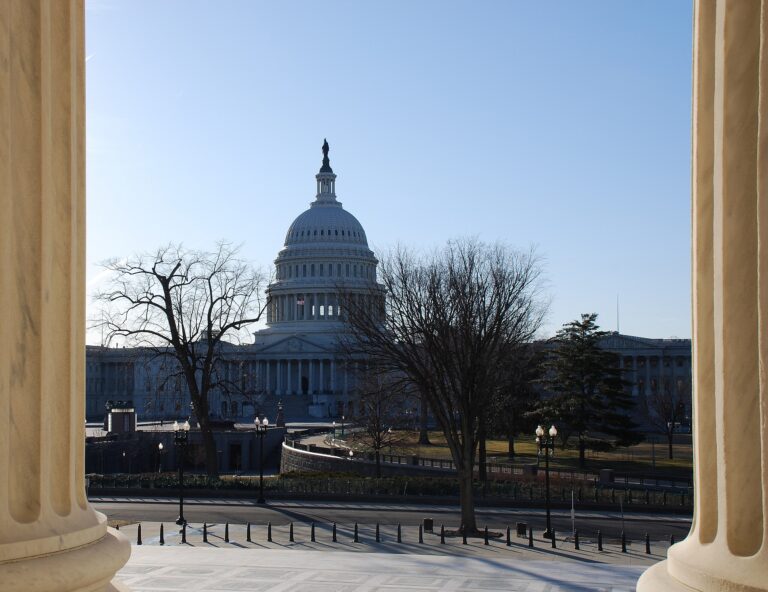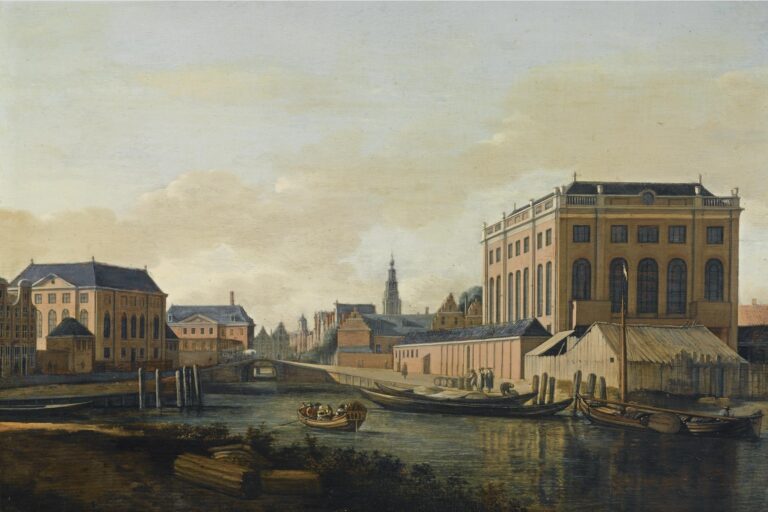
Islam, Women, and Genderization in Professions: The Case of Uzbekistan
Rahimjon Abdugafurov
The following is an excerpt from Rahimjon Abdugafurov’s chapter titled, “Islam, Women, and Genderization in Professions: The Case of Uzbekistan” featured in The Political Economy of Education in Central Asia, an open access collection of essays on Central Asia. Reprinted here with permission from Springer.
The following excerpt investigates how Islamic discourses construct women’s participation in higher education and genderization of professions in Uzbekistan. Qualitative in nature, it analyzes primary sources of four contemporary Uzbekistani Muslim religious figures who enjoy a large audience in the country and in the Central Asian region. The collected data suggest that despite having significant dissimilarities, all four figures discussed in the study share one key element – a male-centered approach to women’s participation in higher education and in choosing professions. The chapter employs Peter Glick and Susan Fiske’s “Ambivalent Sexism Theory” to discuss its findings. While the study does not claim that there is a direct correlation between existing Islamic discourses about women’s participation in higher education and genderization of professions, it argues that the views of the four selected religious figures are reflective of the Uzbekistani society since they are mutually constitutive. The findings of the study can help expand our knowledge in the field of women’s participation in higher education and choices of professions. It also has the potential to be of use to policy makers in Uzbekistan, the Central Asian region and elsewhere.
Although women’s participation in higher education is increasing, the gender gap in participation in professions or genderization of professions continues to exist in Uzbekistan. Women’s participation in higher education in Uzbekistan grew significantly from 31.8% in 2016 to 45% based on the latest data released by the Agency for Statistics of the Republic of Uzbekistan (2022). This positive change is facilitated by the opening of approximately 70 new universities in the past six years. There are now over 154 universities and more than 800 thousand students in higher education (The Agency for Statistics of the Republic of Uzbekistan, 2022). Again, the genderization of professions continues to exist. In other words, the participation of women in certain ‘traditional’ fields rather than having somewhat balanced participation in all educational domains still holds true.
Previous studies, such as the United Nations’ “Women and Men in Uzbekistan: Differences in Education” (2012), the World Bank’s Systematic Country Diagnostic for Uzbekistan (2016), and “the Country Gender Assessment: Update” of the Asian Development Bank (2018) recognize the gender gap in Uzbekistani women’s participation in higher education, including the genderization of professions. For example, the World Bank report discusses gendered specializations and shows that 56% of female students enrolled in higher educational institutions (HEI)s are in the fields of education and culture, 40% in healthcare and physical training, 23% in agriculture, 20% in economics and law, and less than 15% in communication, construction, and transportation. This report concludes that gendered specializations can lead to further gender discrimination and lower wages for women (World Bank, 2016).
To understand the genderization of professions in the case of Uzbekistan, the chapter employs a few theories and conceptual frameworks. However, it relies on “the Ambivalent Sexism Theory” by Peter Glick and Susan Fiske (1997) as a main theoretical tool to explain the issue of religious discourses about women’s participation in higher education and the genderization of professions. Glick and Fiske state that whenever a woman performs something that is in line with what men think of as agreeable, such a woman receives praise or a benevolent sexist remark. When a woman does something that disagrees with men’s perception of proper female behavior, she receives harsh criticism or a hostile sexist remark (Glick& Fiske, 1997). The four religious figures, namely Tursunoy Sodiqova, Muhammad Sodiq Muhammad Yusuf (Muhammad Yusuf going forward), Odinaxon Muhammad Sodiq (also referred here as Bintu Sodiq), and Mubashshir Ahmad, whose works the current chapter analyzes, place men at the center of women’s all education related activities, including higher education and choosing professions. Furthermore, as the findings of the study show, the four Uzbekistani Muslim religious figures agree that women should do whatever they want within what is legitimate or allowed by Islamic law (Sharia), which men usually abuse for their patriarchal interests. If women do not conform to the expectations of men, they become illegitimate in the eyes of society.This chapter first surveys briefly the studies done in the field of religious discourses and women’s participation in higher education as well as the genderization of professions. It also discusses theories and previous works on how one can comprehend and explain the existing gender gap in participation in different professions and the relevance of religious discourses. The section on the findings of the study will offer more detailed examples of the views of the four religious figures with regards to women’s education, higher education and the genderization of professions. The chapter demonstrates that the Islamic discourses are not necessarily a direct reflection of the state policy, but they are reflections of society. Both the state policies with regards to religion and Islamic discourses produced by these four authors reflect the values of the society and are constructed in a mutually constitutive way.
Conceptual framework and literature review
Scholars with both emic and etic perspectives have written about religion and education in Uzbekistan specifically and in Central Asia from a more general perspective. For instance, Abdugafurova (2018) discusses the existence of indirect Islamic influence in school and university textbooks. Using the term of adab or “a discipline of character development in ethics and morals,” and explaining its social implications, Abdugafurova argues that indirect Islamic influences are both implicit and explicit. The author writes: “The Explicitness indicates that Islam is considered part of everyday life and that Uzbek school curriculum includes Islam as part of culture, tradition and history” (p. 232). In relation to the implicit nature of such teachings, the author states, “Implicitness suggests that Islamic values are not the only factor to be considered in moral education in schools but must be combined with secular values” (p. 232). It is possible to interpolate from Abdugafurova’s work that the instillation of Islamic morals, ethics and values is present at the school and university levels in Uzbekistan. Abdugafurova’s work is of great value in understanding how Islamic discourses are deeply embedded into the educational system, although the Uzbekistani government claims that its educational curriculum is secular.
Khalilova (2020) also offers important discussions on the history of education and its interaction with religion throughout the Tsarist, communist, and post-Soviet environments. Khalilova discusses how Islamic ideas, although not taught at schools as a religious subject per se, seep into the school curriculum (pp.105-109). Additionally, the author examines governmental laws on religion and education and their dynamic nature throughout the history of Central Asia.
The genderization of professions is another important subject previous scholars and practitioners have raised with regards to Uzbekistan. Tabaeva et al. (2021) discuss gender inequality “in the fields of education and employment” and state that “women are predominantly concentrated in low-wage social sectors such as education and health, while men dominate income-generating engineering and business sectors such as industry and communication” (p.38). Other scholars have also addressed issues related to gender norms, women’s educational activities in Uzbekistan and in the Central Asian region (Peshkova, 2020; Peshkova & Thibault, 2022; Tokhtakhodjaeva, 2008) and demonstrated how gender norms are constructed by male-centered traditional discourses.
Key publications produced by international organizations, such as World Bank (2016), the United Nations (2012), and Asian Development Bank (2018) all recognize the problem of genderization of specializations and attempt to shed some light on it. For example, the United Nations (2012) identifies six reasons that impact women’s participation in higher education and genderization of professions: (1) decision making for girls by parents in choosing a profession, (2) prioritizing sons over daughters when it comes to paid higher education, (3) social pressure to choose a profession that might be useful for family life for girls, (4) unwillingness of parents to send girls too far away to study, (5) not enough universities in certain regions in the country, and (6) earlier marriages for girls than boys which decrease women’s participation in higher education because of early childbirth.
While these studies focus on some social, economic, and geographical factors, they do not explore religious aspects of the issue. The Asian Development Bank (2018) recognizes that there is a need to conduct further studies to “identify more root causes” for the genderization of professions (p.73). This chapter focuses on this issue and discusses the genderization of professions in Uzbekistan in relation to Islamic discourses and their construction of women’s participation in higher education. The chapter considers the mutually constitutive nature of the matter at hand. While the study does not claim a direct correlation between existing Islamic discourses about women’s participation in higher education and the genderization of professions, it argues that they are reflective of the Uzbekistani society’s values and dominant gender norms since these two factors are mutually constitutive.
As mentioned earlier, the theory adopted in the chapter is “the Ambivalent Sexism Theory” by Peter Glick and Susan Fiske (1997). Glick and Fiske explain the theory in the following way:
Ambivalent Sexism Theory distinguishes between hostile and “benevolent” sexism (each addresses issues of power, gender differentiation, and sexuality). Benevolent sexism encompasses subjectively positive (for the sexist) attitudes toward women in traditional roles: protective paternalism, idealization of women, and desire for intimate relations. Hostile sexism encompasses the negative equivalents on each dimension: dominative paternalism, derogatory beliefs, and heterosexual hostility. Both forms of sexism serve to justify and maintain patriarchy and traditional gender roles. (p.119)
The chapter demonstrates through the examples in the findings section, that all four religious figures, including two female authors, express both benevolent and hostile sexist attitudes toward women. This is to say, women who are in the service of men as good mothers and wives receive benevolent sexist remarks while women who take leadership roles in business or other areas are subject to hostile sexist attitudes. Additionally, all the religious figures whose works the chapter analyses here see women’s education within the limits of Shari’a or Islamic law, and whenever women function beyond these “Islamic legal” boundaries, they become branded as illegitimate.
Religious statements have a bearing on their time and context, which remain under the influence of existing political systems. Carl Ernst (2003) writes that “every claim about religion needs to be examined critically for its political implications” (p. 8). This is to say, that the tones in the changes of the authors from one presidential period to another reflect political adjustments. Ernst (2003) continues to state:
Religion is not a realm of facts, but a field in which every statement is contested, and all claims are challenged. Religious language in the public sphere is not meant to convey information but to establish authority and legitimacy through assertion and persuasion. (p.8)
For this reason, this study questions what kind of authoritative “Islamic” messages the four religious figures—Muhammad Yusuf, Tursunoy Sodiqova, Odinaxon Muhammad Sodiq, and Mubshshir Ahmad—are trying to convey, as the hermeneutical influence of such discourses in the public realm can have political as well as social implications.
Findings
All four religious figures whose works the current chapter employs depict male’s role as a central factor in determining women’s higher educational and professional decisions. For example, Muhammad Yusuf asks whether women should work or hold important positions. He writes in his book called Iymon [Faith] that “women should first be assistants in their husbands’ work. Only when her family is in need, should she work in a halal or pious way” (2010, p. 65). Similarly, Tursunoy Sodiqova (2018) states that women must not attempt to take over male roles and promotes the idea that both in the Islamic law (Sharia) and in the laws of the society, men are leaders of families (p.10). The other two religious figures also present similar views with regards to men’s role in women’s obtaining of higher education or selection of professions. For instance, Odinaxon Muhammad Sodiq argues that women are more adaptable to certain professions, such as teaching, than men are by claiming that men lack patience (Bintu Sodiq, 2022). Mubashshir Ahmad, also argues that men should be responsible for financing women’s education (Ustoz Mubashshir Ahmad, 2023). Although such arguments seem to be ‘praising’ or ‘protecting’ women, they qualify as benevolent sexism as they ultimately contribute to the creation of a male-centered environment.
Below is the individual summary of the views of these four Uzbekistani religious figures with regards to the themes, such as how they perceive women’s education, including higher education and how they view women’s role in society, including women’s professions.
Conclusions
All four religious voices the current chapter has discussed call for women’s knowledge acquisition but when it comes to women’s participation in higher education and profession choice, the views of these four authors presented some differences. All these four figures, who produce publications, social media, and other digital products, reflect the realities of the current Uzbekistani society. The fact that they have such profuse and pervasive presence makes one wonder if they share similar religious ideologies in their religious and intellectual productions. As the findings of the current study demonstrate, obvious contradictions by the same religious figure (in the case of Bintu Sodiq) can in fact be the result of her later alignments with the state policies with regards to religious affairs. In sum, it is fair to say that a genderization of professions persists in Uzbekistan and that such an attitude can obviously inhibit certain women from achieving their full potential. Although the current study does not claim that there is direct correlation between Islamic discourses and women’s participation in higher education and genderization of professions, such religious figures, with authority and influence, seem to contribute to the perpetuation of patriarchal norms in the Uzbekistani society, particularly in women’s higher education and choice of professions. ♦

Dr. Rahimjon Abdugafurov is a senior fellow at the CSLR and conducts research on legal, religious and educational spheres pertaining to Central Asia and Middle East. He serves as an Associate Director for Religious and Spiritual Life and Muslim Chaplain at Macalester College in Saint Paul, MN.
Recommended Citation
Abdugafurov, Rahimjon. “Islam, Women, and Genderization in Professions: The Case of Uzbekistan.” Canopy Forum, April 11, 2024. canopyforum.org/2024/04/11/islam-women-and-genderization-in-professions-the-case-of-uzbekistan-by-rahimjon-abdugafurov/.
Recent Posts











